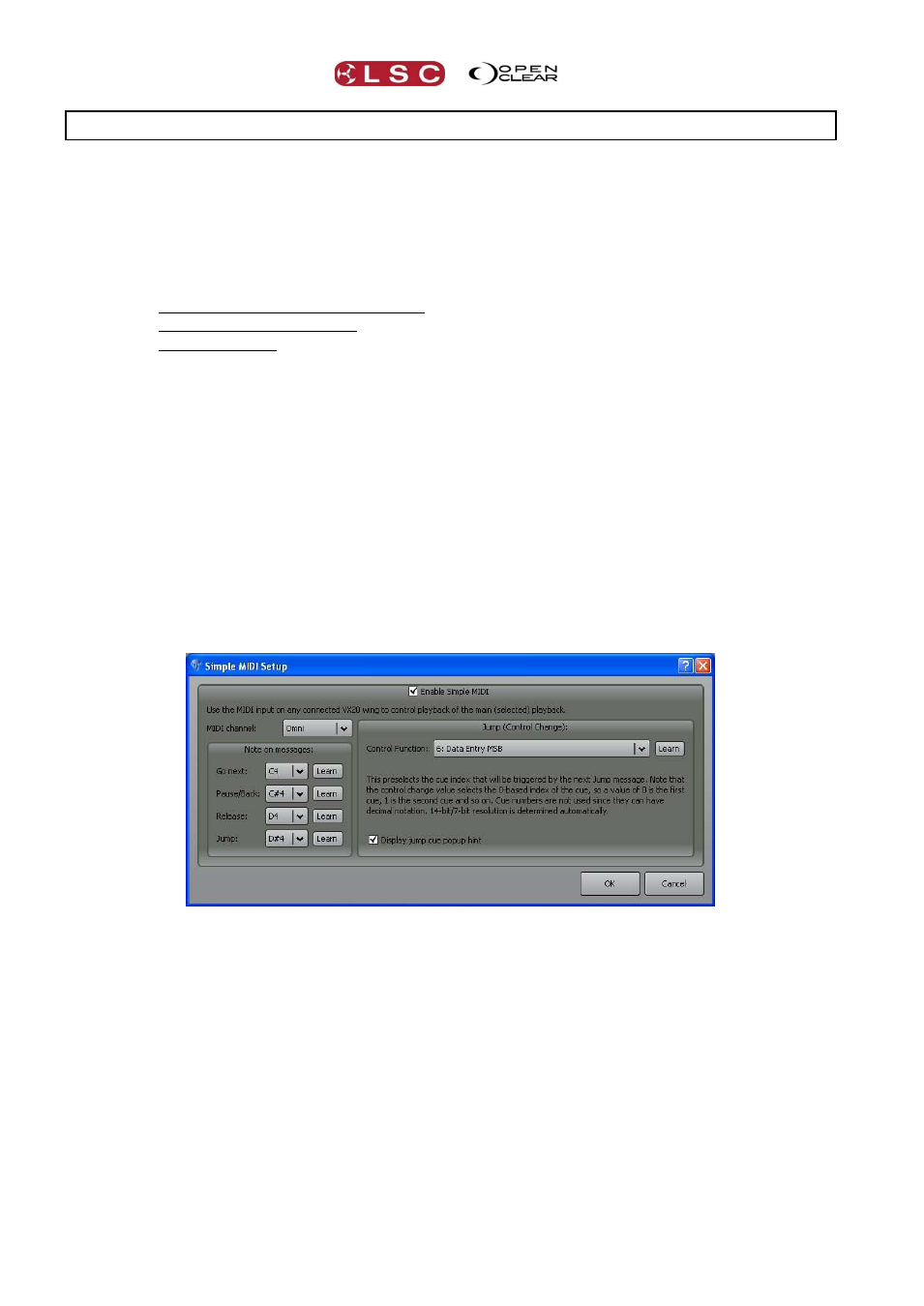31 midi, 1 overview, 2 midi control of selected playback – LSC Lighting CLARITY LX Series v.1 User Manual
Page 214: 1 midi settings, 2 midi channel, 3 midi note on messages, On 31

MIDI
Clarity
Operator Manual
Page 204
31 MIDI
31.1 OVERVIEW
MIDI (Musical Instrument Digital Interface) is an international standard for data communication
between musical instruments, computers and other equipment such as lighting controllers. The
MIDI IN connector on the rear panel receives signals from a MIDI device such as a keyboard,
MIDI sequencer or computer with MIDI output and uses the signals for various functions.
Clarity uses MIDI in three ways:
1. MIDI Control of Selected Playback (Simple MIDI).
2. MIDI Control of a Cuelist.
3. MIDI Timecode can be used to playback cues at specific times.
31.2 MIDI CONTROL OF SELECTED PLAYBACK
A MIDI signal can be used to remotely control the playback of the “selected” playback. On an
LX console, a playback is selected by touching it’s touch screen. The cue-list name of the
currently selected playback is displayed in black text on a white background. The MIDI
commands can be used as follows:
MIDI “Note ON” messages can be assigned to trigger the Go, Pause/Back, Release and
Jump functions of the selected playback.
MIDI “Control Change” messages can be used to pre-select a cue in the cue-list of the
selected playback that will be triggered by the next “Note on” message to be received
that is assigned to the “Jump” function.
31.2.1 MIDI Settings
To enable and setup Simple MIDI, select Show, Settings, MIDI. The “Simple MIDI Setup”
dialog box appears:
To enable MIDI, tick the “Enable Simple MIDI” box.
31.2.2 MIDI Channel
MIDI signals are sent and received on 16 separate channels on the one cable. Use the MIDI
channel drop down box to select the MIDI channel on which your MIDI transmitting device is
sending its messages. Selecting “Omni” receives on all 16 channels simultaneously.
31.2.3 MIDI Note On Messages
The MIDI protocol uses many different types of messages. “Note on” is one type of MIDI
message. Each note on the MIDI keyboard has a number assigned to it and when that note is
played, MIDI sends a “note on” message for that note.
You can assign any note’s “note on” message to control the Go next, Pause/Back, Release
and Jump buttons of the selected playback. Clicking on the drop down box beside each button
name allows you to select the note that will activate it. The currently assigned note is shown
beside each button. See also “Learn MIDI” below.